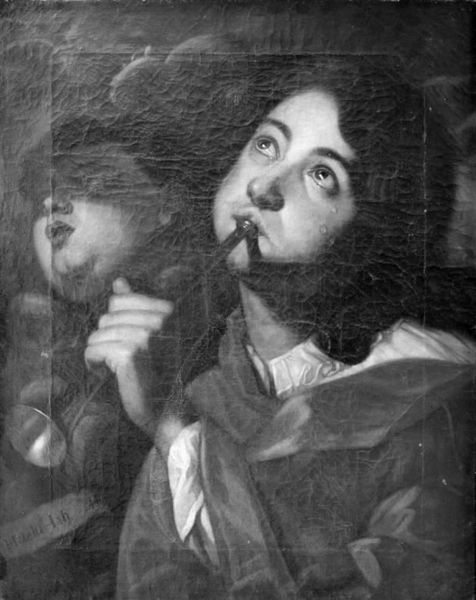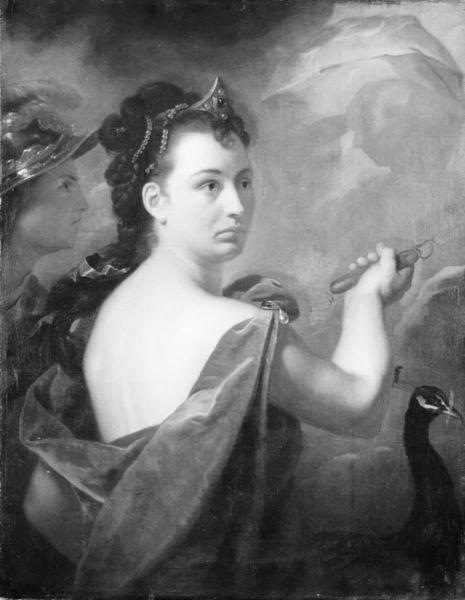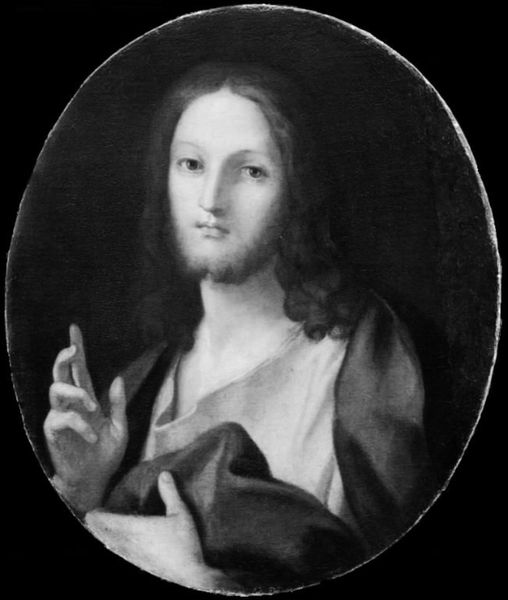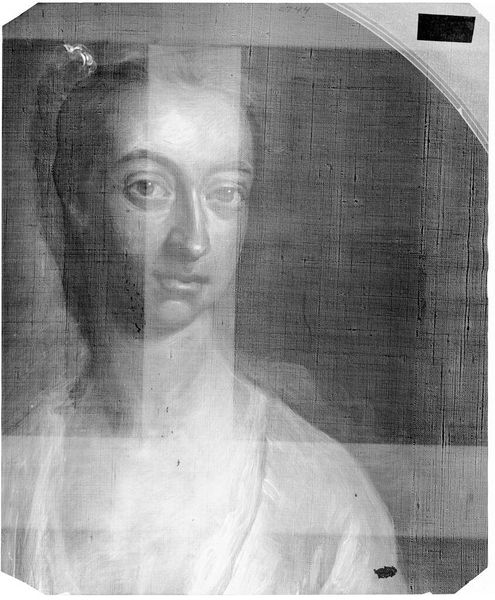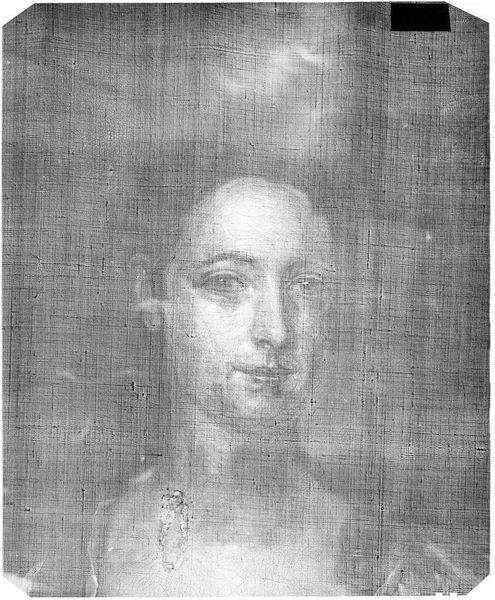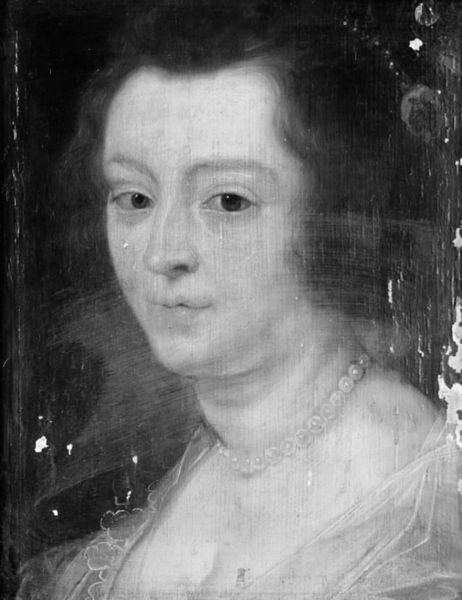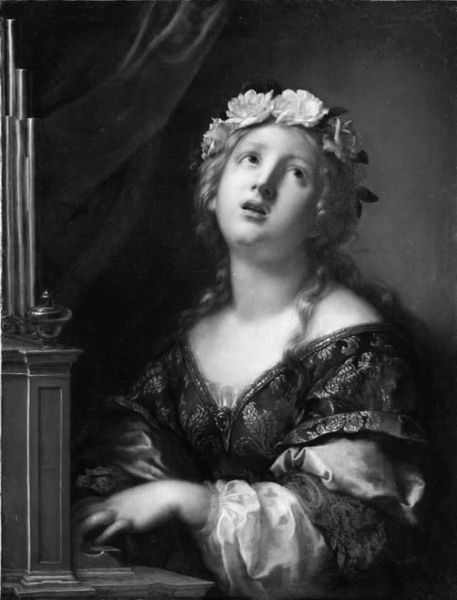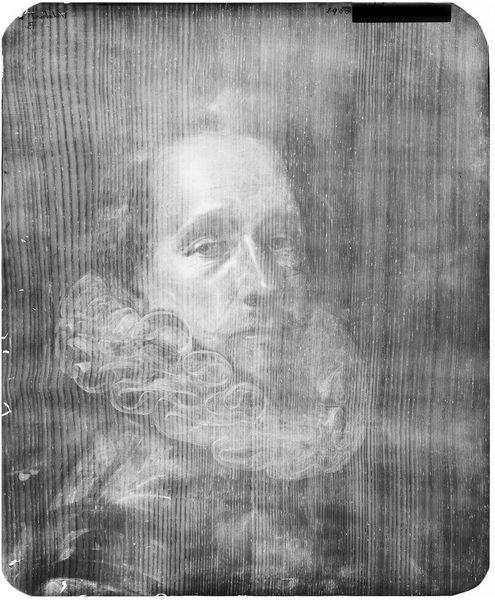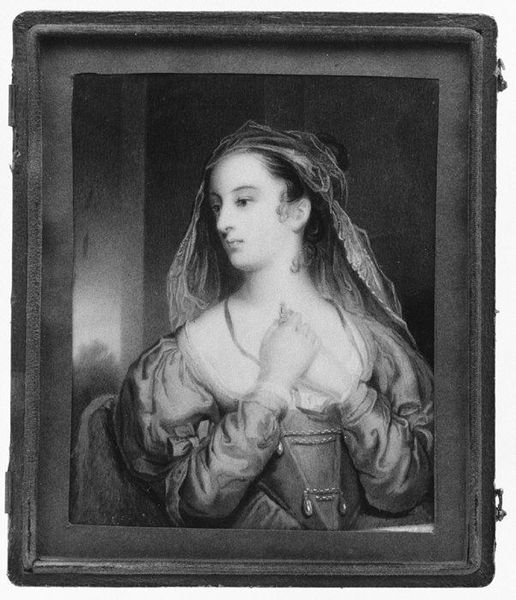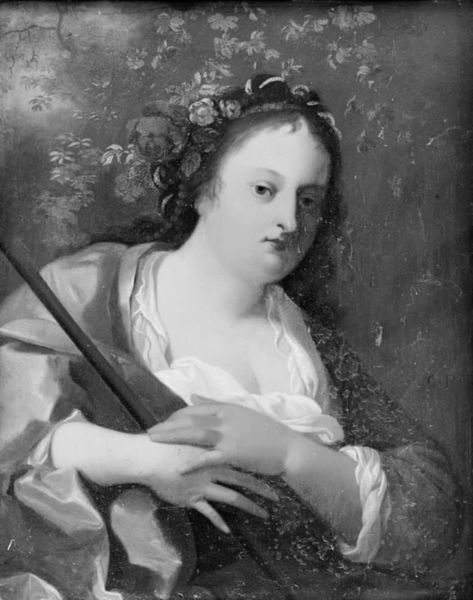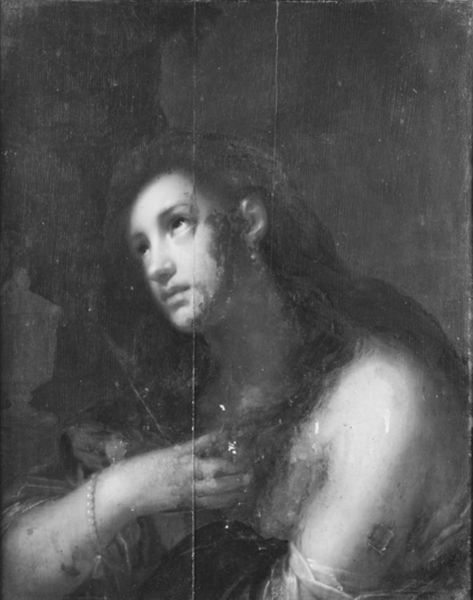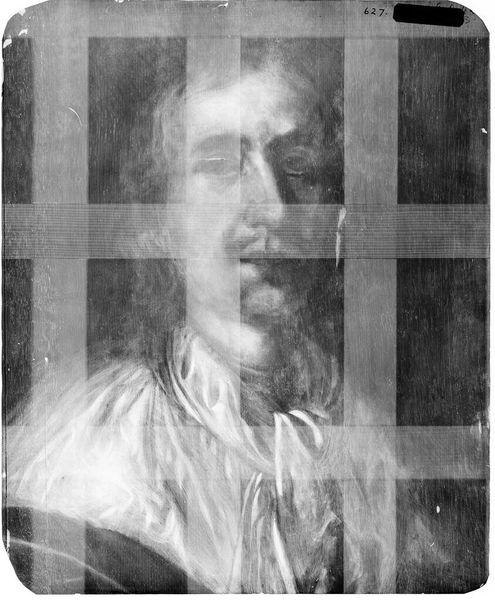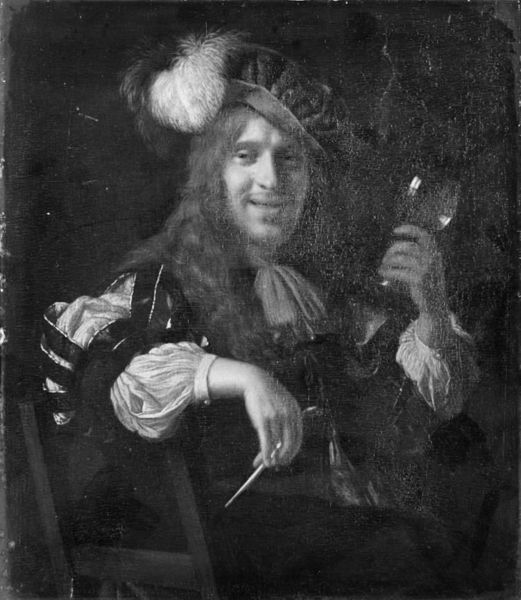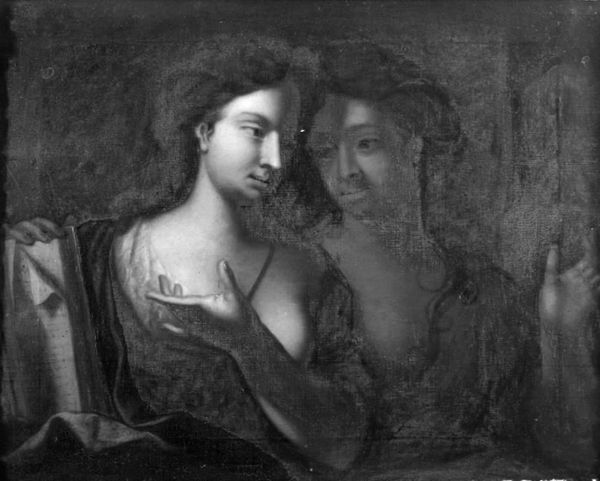
painting, oil-paint
#
portrait
#
baroque
#
portrait
#
painting
#
oil-paint
#
charcoal drawing
#
black and white
#
nude
#
realism
Dimensions: 60 cm (height) x 47 cm (width) (Netto)
Curator: Here we have "Brystbillede af kvinde", or "Bust Portrait of a Woman," created sometime between 1657 and 1715. It's an oil painting. What are your first thoughts? Editor: Stark. Somber. I'm immediately drawn to the use of shadow, particularly in how it defines her face and the subtle rendering of the fabric. It seems to be purposefully withholding something. Curator: It is indeed quite muted, nearly monochromatic. Think about the availability, preparation, and application of oil paint in this period. The raw materials—pigments, linseed oil, and the canvas itself—would all be locally sourced and processed, dictating much of the palette we see. Editor: Which speaks to the societal constraints of the time as well. A portrait like this—of a woman, nude, in such a straightforward style—likely reflects a very specific dynamic between the artist, Jacob d'Agar, and his patron or subject. What narratives of female representation are being reinforced, or perhaps subverted? Curator: I'm more interested in the visible brushwork, which suggests a relatively quick execution. We're not seeing the layered glazes and meticulous detail often associated with High Baroque portraiture. It hints at a studio practice where efficiency and output were prioritized. Editor: And how does that intersect with ideas of female agency and commodification? Was she a paid model, an intimate, or something else? The absence of vibrant color, the almost crude strokes... these elements seem to strip away idealization, revealing a more vulnerable figure caught in a web of social and economic relationships. Curator: Perhaps. Or maybe d'Agar was experimenting, pushing against the established norms of his time regarding the amount of detail considered acceptable. Think of it as early exploration in the texture of oil paint! Editor: Either way, by exploring both the material realities of its production and its socio-cultural context, we gain a more complete understanding of this seemingly simple portrait. Curator: Exactly. It encourages us to reconsider what defines 'high art' when the labor and materials themselves carry so much weight. Editor: Indeed. I will walk away pondering that complex interplay of artistic choices and the women involved.
Comments
No comments
Be the first to comment and join the conversation on the ultimate creative platform.
